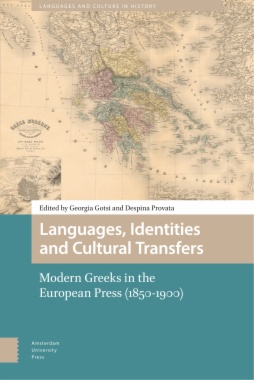What was the perception of Greece in Europe during the later nineteenth century, when the attraction of romantic philhellenism had waned? This volume focuses on the reception of medieval and modern Greece in the European press, rigorously analysing journals and newspapers published in England, France, Germany, Italy, and The Netherlands. The essays here suggest that reactions to the Greek state's progress and irredentist desires were followed among the European intelligentsia. Concurrently, new scholarship on the historical development of the Greek language and vernacular literature enhanced the image of medieval and modern Greece. This volume's contributors consider the press's role in this Europewide exchange of ideas, explore the links between romantic and late philhellenism and underscore the scholarly nature of the latter. Moreover, they highlight the human aspects of cultural transfers by focusing on networks of mediators, publishers and scholarly collaborators. This context enhances our understanding of both the creation of Hellenic studies and the complex formation of the modern Greek identity.
- Cover
- Table of Contents
- Note on transliteration and other editorial practices
- Introduction: Greece in the European press in the second half of the nineteenth century: Language, culture, identity
- Georgia Gotsi and Despina Provata
- 1. Marinos Papadopoulos Vretos: ‘Le trait d’union entre Paris et Athènes, l’intermédiaire naturel entre la Grèce et les Philhellènes des bords de la Seine’ (Victor Fournel, L’Espérance, 1858)
- 2. Greek Identities and French Politics in the Revue des Deux Mondes (1846–1900)
- 3. The emergence of modern Greek studies in late-nineteenth-century France and England: The yearbooks of the Association pour l’encouragement des études grecques en France (1867) and of the Society for the Promotion of Hellenic Studies (1877)
- 4. La Grèce moderne dans la Nouvelle Revue (1879-1899)
- 5. Medieval and modern Greece in the Academy
- 6. Modern Greek studies in Italy
(1866–1897): Philhellenic revival and classical tradition through the lens of the Nuova Antologia
- 7. An interesting utopian undertaking: The Philhellenic Society of Amsterdam and the journal Ελλάς/Hellas (Leiden, 1889–1897)
- 8. Les études de grec moderne en Allemagne et la revue Byzantinische Zeitschrift (1892–1909)
- 9. La Grèce et l’Europe à travers l’insurrection crétoise de 1895–1897, reflétées dans la presse de l’époque
- Index of Names
- Index of Places
- Index of Newspapers and Periodicals
- List of figures
- Figure 1.1. General view of Athens. Reproduced with permission of the Gennadius Library,American School of Classical Studies at Athens.
- Figure 4.1. Couverture du premier tome de La Nouvelle Revue. Reproduction avecl’autorisation de la Bibliothèque du Parlement Hellénique [Front cover of the firstvolume of the journal La Nouvelle Revue. Reproduced with permission of the Libraryof the Hellenic Parliament].
- Figure 7.1. Front cover of the first volume of the journal Ελλάς/Hellas. Reproduced with permissionof the Library of the Hellenic Parliament.
- Figure 8.1. Couverture de la revue Byzantinische Zeitschrift. Reproduction avec autorisation de laBibliothèque Gennadeion, École américaine d’études classiques d’Athènes [Front cover of thejournal Byzantinische Zeitschrift. Reproduced with permission of the Gennadius Library, AmericanSchool of Classical Studies at Athens].

